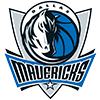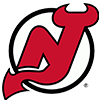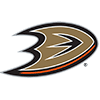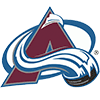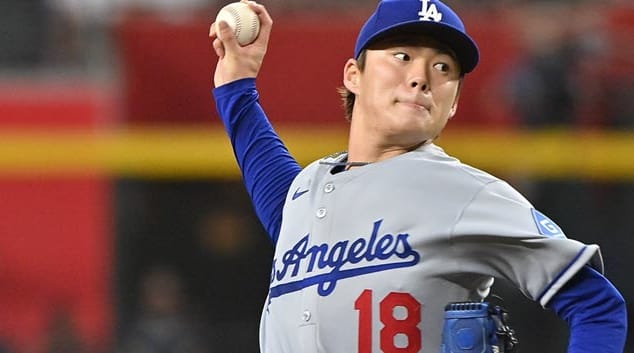Man, is it good to be back. As important of a topic as labor relations is, it's not the most fun subject and not the one I hoped to spend my time writing about. I'd prepared a few weeks of potential big-picture topics to pass the time until the lockout ended, but I'm thrilled to toss them away and get back to covering actual baseball news.
This week, I'll give a quick breakdown of my draft in The Great Fantasy Baseball Invitational to provide some of my thoughts on how to navigate this year's draft pool before moving on to discuss the biggest winners and losers of the recent rush of news.
I've had three years of good performances in TGFBI, ranking 36th out of 620 total drafters across the history of the competition, but I've yet to win my individual league or make a serious push at the overall season title. RotoWire's James Anderson ranks second all-time and has three top-20 finishes, while Clay Link and Todd Zola took home the overall crown in the league's first two seasons, so there's quite a history of success for this company in TGFBI, something I'm looking to live up to.
Note that this draft began on Feb. 28 and wrapped up last Wednesday. There are already a few picks I regret, starting with ...
1.2 Fernando Tatis, SS/OF
Welp. I was lucky enough to get an early pick and got the guy who I would have drafted first overall.
Man, is it good to be back. As important of a topic as labor relations is, it's not the most fun subject and not the one I hoped to spend my time writing about. I'd prepared a few weeks of potential big-picture topics to pass the time until the lockout ended, but I'm thrilled to toss them away and get back to covering actual baseball news.
This week, I'll give a quick breakdown of my draft in The Great Fantasy Baseball Invitational to provide some of my thoughts on how to navigate this year's draft pool before moving on to discuss the biggest winners and losers of the recent rush of news.
I've had three years of good performances in TGFBI, ranking 36th out of 620 total drafters across the history of the competition, but I've yet to win my individual league or make a serious push at the overall season title. RotoWire's James Anderson ranks second all-time and has three top-20 finishes, while Clay Link and Todd Zola took home the overall crown in the league's first two seasons, so there's quite a history of success for this company in TGFBI, something I'm looking to live up to.
Note that this draft began on Feb. 28 and wrapped up last Wednesday. There are already a few picks I regret, starting with ...
1.2 Fernando Tatis, SS/OF
Welp. I was lucky enough to get an early pick and got the guy who I would have drafted first overall. I was willing to tolerate the increased injury risk he came with compared to consensus No. 1 Trea Turner, as I thought the gap between his ridiculous 21.3 percent barrel rate and Turner's below-average 7.4 percent more than made up for it. As it turns out, he'll miss the start of the season while recovering from a fractured wrist (more on that below). Not exactly how you want to start a draft, though I still think the process was fine at the time, as I don't think an unreported offseason fracture is in any way related to Tatis' perceived elevated injury risk, which was driven by concerns with his shoulder.
2.29 Jacob deGrom, SP
I doubled down on injury risk with deGrom in Round 2, but that was worth it to me if it meant I got to open my draft with the most talented pitcher and hitter in the draft. I've found myself to be more tolerant of injury risk than most drafters, primarily because we collectively underrate just how risky even the supposedly safe options are, particularly at pitcher. I'm not downplaying deGrom's injury risk, but given that any pitcher can blow his elbow out at any time, I believe the gap between his risk and everyone else's aces' risk isn't as large as people think. I'm willing to take that gamble to get a pitcher who just produced the lowest ERA (1.08) and highest strikeout rate (45.1 percent) among pitchers who threw at least 90 innings in the last 100 years.
3.32 Robbie Ray, SP
With deGrom as my ace, I knew I wanted another pitcher very soon to have a top-tier alternative should deGrom indeed wind up injured. This is much earlier than many would pick Ray, but he was the top starter on my board and wasn't going to be around 27 picks later. Many fear significant regression for the lefty, but the projections generally seem to like him even while predicting a much higher walk rate. His move out of the AL East and into a pitcher-friendly park in Seattle should counteract much of that regression, but this is also a philosophical pick on my part. I emphasize whiffs and de-emphasize ERA compared to most drafters, as strikeout rates vary far less year to year since they aren't subject to things like team defense and batted-ball luck.
4.59 Francisco Lindor, SS; 5.62 Brandon Lowe, 2B; 6.89 J.D. Martinez, OF; 7.92 Giancarlo Stanton, OF
Whenever I begin a draft with two starters in the first three rounds, my goal is to stick with bats for at least another four or five picks, as I need to make up for the fact that I'm behind most of my leaguemates on the offensive side. Lindor disappointed last year, but metrics like his .248 BABIP and the 40-point gap between his slugging percentage and xSLG suggest that bad luck overstated the extent of his drop. I'm not expecting a repeat of his peak seasons, but he's a rare power-speed option who comes at a fair price thanks to his poor 2021 depressing his market. Between him and Tatis, I was comfortable where I stood in steals, so I was free to pivot to hitters who simply mash, and Lowe, Martinez and Stanton do exactly that.
8.119 Giovanny Gallegos, RP; 9.122 Joey Votto, 1B; 10.149 Keibert Ruiz, C
Closers are flying off the board earlier than ever this season, but I remain unwilling to miss out on an elite early round hitter to grab one. I felt more or less compelled to jump Gallegos above where I'd prefer to take him here, as he was the last of the relievers that I thought had both elite talent and a clear path to closing, though I'd feel better about it if he officially had the job. I then went back to the bats for two hitters separated by 15 years in age. Votto's late-career renaissance was fueled by trading some of his contact for power, and the trade-off seems more than worth it. Ruiz is a catcher I'm targeting heavily this season thanks to his miniscule 9.4 percent strikeout rate in 96 plate appearances last season. That came with a paltry 2.5 percent barrel rate, but I'm betting that his .616 slugging percentage at Triple-A indicates that more power is on its way.
11.152 Eduardo Rodriguez, SP; 12.179 Josh Donaldson, 3B; 13.182 Michael Kopech, SP; 14.209 Tanner Houck, SP; 15.212 Ranger Suarez, SP
My team was suddenly hitter-heavy in this stretch after being pitcher-heavy early on, so I wanted to attack starting pitching throughout these rounds. I did just that (outside of a brief diversion to grab Donaldson, the last third baseman I was comfortable with as my starter), and I couldn't be happier with the guys who ended up being available. Rodriguez is one of my top pitching targets, as he's coming off a career-high 27.4 percent strikeout rate and recorded career lows across the ERA estimators, yet his price is being suppressed by an unlucky 4.74 ERA. Kopech and Houck have workload concerns but posted elite strikeout rates (36.1 percent and 30.5 percent, respectively) last year, while Suarez's above-average 25.6 percent strikeout rate and elite 59.2 percent groundball rate make for a rare combo. (Note that this draft was completed before the news of his visa troubles, which may cost him a few starts.)
16.239 Brandon Crawford, SS; 17.242 Tommy Pham, OF; 18.269 Luke Voit, 1B; 19.272 Raimel Tapia, OF; 20.299 Tylor Megill, SP; 21.302 Max Stassi, C; 22.329 Kyle Lewis, OF; 23.332 Nick Pivetta, SP
These rounds consisted of filling out my starting lineup, mixing in underpriced mashers with injury concerns (Voit and Lewis) alongside guys who should keep me competitive in steals like Pham and Tapia. Ideally, I would have liked a second closer in this stretch, but I just didn't like the values on pitchers who seemingly have jobs to open the year but don't look talented enough to keep them like Rowan Wick and Kyle Finnegan. I'll have to fight for saves on the wire, but that's true of a ton of teams. Plus, avoiding a bad closer just for the sake of having two closers means I got to draft eight starters up to this point, giving me plenty of coverage in the event of a deGrom injury, which continued to inform my draft.
24.359 Adbert Alzolay, SP; 25.362 Patrick Wisdom, 3B; 26.389 Dane Dunning, SP; 27.392 Carlos Estevez, RP; 28.419 Hunter Greene, SP; 29.422 Jose Miranda, 3B; 30.449 JT Brubaker, SP
My reserve rounds were full of picks that already look different, but thankfully, getting things wrong in these rounds shouldn't hurt too much. I liked Alzolay a lot, but he's delayed with a shoulder issue. I thought Estevez was the cheapest possible second closer, but he now looks like a setup man in front of Alex Colome. The Miranda pick at least looks potentially better than he did at the time. I drafted him as insurance for Josh Donaldson, which was enough of a reason for me to go with a third option at the hot corner over a second option at the keystone, but with Donaldson now a Yankee, his path to at-bats could potentially be easier.
I'd be curious to hear your thoughts on this squad in the comments below. Is a start like Tatis/deGrom (taking into account that Tatis wasn't injured yet) too risky to consider, or is the potential payoff worth it? Are you ruling out deGrom under any circumstances, and if you aren't, would you build the rest of your roster in a similar way? I felt almost forced to grab another pitcher right after taking him, which in turn left me feeling almost forced to get bats with my next several picks, but I'd be interested in hearing about alternative paths.
For now, we'll move on to the biggest winners and losers from the first few days of post-lockout news. After a somewhat slow start once transactions re-opened, things have picked up in the last couple days, and I've already had to delete a paragraph about how much I liked Ryan Jeffers, which was written between the time the Twins traded Mitch Garver and traded for Gary Sanchez.
RISERS
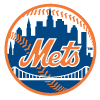 Jacob deGrom, SP, Mets: Many drafters are understandably wary of deGrom's health after he missed the entire second half with what was called a partial tear of his UCL. While the righty reportedly felt fully healthy at the very end of last season and would have returned if the Mets were still in the race, that notion was met with widespread skepticism. All he needed to do was show up to camp seemingly healthy and throw some bullpen sessions to restart the hype train, however, and he's done just that. His stock likely will rise still further once he completes his first Grapefruit League game without issues, so if you have enough faith in him to take the plunge, the time to grab him is now, as there's a chance he moves from the back half of the second round in 15-team leagues all the way to the middle of the first. For all the legitimate injury concerns he comes with, he's also not merely the best pitcher in the league when healthy but the best by some margin. His numbers in 15 starts last season were simply laughable, as he rode a 45.1 percent strikeout rate and 3.4 percent walk rate to a 1.08 ERA, a number which barely looks like an overachievement next to his 1.24 FIP.
Jacob deGrom, SP, Mets: Many drafters are understandably wary of deGrom's health after he missed the entire second half with what was called a partial tear of his UCL. While the righty reportedly felt fully healthy at the very end of last season and would have returned if the Mets were still in the race, that notion was met with widespread skepticism. All he needed to do was show up to camp seemingly healthy and throw some bullpen sessions to restart the hype train, however, and he's done just that. His stock likely will rise still further once he completes his first Grapefruit League game without issues, so if you have enough faith in him to take the plunge, the time to grab him is now, as there's a chance he moves from the back half of the second round in 15-team leagues all the way to the middle of the first. For all the legitimate injury concerns he comes with, he's also not merely the best pitcher in the league when healthy but the best by some margin. His numbers in 15 starts last season were simply laughable, as he rode a 45.1 percent strikeout rate and 3.4 percent walk rate to a 1.08 ERA, a number which barely looks like an overachievement next to his 1.24 FIP.
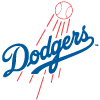 Clayton Kershaw, SP, Dodgers;
Clayton Kershaw, SP, Dodgers;  Carlos Rodon, SP, Giants: I'm grouping these two lefties together, as they're in very similar situations. Neither pitcher comes with questions about their respective talent. Kershaw is the best pitcher of his generation, and while his 3.55 ERA last season was his highest since his rookie season, it was more than acceptable and came with a 3.00 FIP and 2.87 xFIP. Rodon doesn't have anything remotely close to Kershaw's career resume, but he broke out to the tune of a 2.37 ERA and a 34.6 percent strikeout rate last season, numbers that ranked first and second, respectively, among pitchers who threw at least 130 innings. Both pitchers ended the year with injury concerns, however, and the fact that they weren't even tendered qualifying offers by their teams seemed like a very foreboding sign. If those injury concerns were anything other than serious, you'd think their teams would be willing to take a one-year, $18.4 million risk to get a talent that special.
Carlos Rodon, SP, Giants: I'm grouping these two lefties together, as they're in very similar situations. Neither pitcher comes with questions about their respective talent. Kershaw is the best pitcher of his generation, and while his 3.55 ERA last season was his highest since his rookie season, it was more than acceptable and came with a 3.00 FIP and 2.87 xFIP. Rodon doesn't have anything remotely close to Kershaw's career resume, but he broke out to the tune of a 2.37 ERA and a 34.6 percent strikeout rate last season, numbers that ranked first and second, respectively, among pitchers who threw at least 130 innings. Both pitchers ended the year with injury concerns, however, and the fact that they weren't even tendered qualifying offers by their teams seemed like a very foreboding sign. If those injury concerns were anything other than serious, you'd think their teams would be willing to take a one-year, $18.4 million risk to get a talent that special.
Those concerns suppressed both southpaws' draft prices, but the fact that both pitchers signed so quickly after the lockout should reverse that trend. Just the fact that they were wanted at all raises their stock, but their specific landing spots are about as good as you could ask for. Both pitchers will pitch for strong teams in pitcher-friendly parks. Kershaw gets to go back to the organization that knows him best (which raises confidence that they're comfortable with the status of his forearm), while Rodon moves to a Giants organization which has a well-earned reputation both for making smart decisions and for getting the most out of its pitchers.
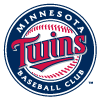 Sonny Gray, SP, Twins: Most of the trades in the last few days didn't actually move the needle too much for the players involved. Chris Bassitt got a small downgrade in park leaving Oakland, but that should be roughly canceled out by his increased shot at wins with the Mets. Meanwhile, the five-player deal between the Yankees and Twins may not have major impacts, as the two parks rank very similarly despite Yankee Stadium being more homer-friendly. Gray, on the other hand, should see a big benefit from leaving Great American Ball Park, one of the most hitter-friendly venues in the league. Despite the tough home park, Gray was quite valuable over his three years in Cincinnati, cruising to a 3.49 ERA. He was helped by the fact that he suddenly became a strikeout weapon, whiffing 28.5 percent of opposing batters after posting an unimpressive 20.6 percent strikeout rate over the previous five seasons. 2021 was the worst of his three years as a Red, as his ERA jumped to 4.19 while his strikeout rate fell slightly to 27.0 percent, and while the aging curve foretells another potential step back this season for the 32-year-old, his new park should help him offset that by a fair amount.
Sonny Gray, SP, Twins: Most of the trades in the last few days didn't actually move the needle too much for the players involved. Chris Bassitt got a small downgrade in park leaving Oakland, but that should be roughly canceled out by his increased shot at wins with the Mets. Meanwhile, the five-player deal between the Yankees and Twins may not have major impacts, as the two parks rank very similarly despite Yankee Stadium being more homer-friendly. Gray, on the other hand, should see a big benefit from leaving Great American Ball Park, one of the most hitter-friendly venues in the league. Despite the tough home park, Gray was quite valuable over his three years in Cincinnati, cruising to a 3.49 ERA. He was helped by the fact that he suddenly became a strikeout weapon, whiffing 28.5 percent of opposing batters after posting an unimpressive 20.6 percent strikeout rate over the previous five seasons. 2021 was the worst of his three years as a Red, as his ERA jumped to 4.19 while his strikeout rate fell slightly to 27.0 percent, and while the aging curve foretells another potential step back this season for the 32-year-old, his new park should help him offset that by a fair amount.
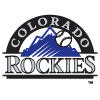 Alex Colome, RP, Rockies: Do you want the cheapest possible locked-in closer, allowing you to pay for saves but not spend a single cent more? Colome may be your guy. While he doesn't have that locked-in title yet, it stands to reason that the Rockies signed him with the clear intention of having him fill the role. The 33-year-old righty has earned the "proven closer" label, saving at least 12 games in each of the last six seasons to give him 155 for his career. He doesn't have a typical closer's strikeout rate, whiffing 21.7 percent of batters for his career and 20.0 percent last season, but he's gotten the job done anyway, posting a 3.11 career ERA that comes in well below his 3.63 FIP and 4.02 xFIP. Despite all that, it sure looks as though he's the guy in Colorado, where last year's saves leaders Daniel Bard and Carlos Estevez are far from inspiring choices. Colome looks to have a good shot to beat them out and rack up 30-plus saves, though that number could drop to around 20 if he's dealt at the deadline to a team with a better ninth-inning option. Don't expect many whiffs from him, and don't expect great ratios either from a pitcher who spends half his time at Coors Field, but from a pure dollars-per-save perspective, Colome could be your best bet.
Alex Colome, RP, Rockies: Do you want the cheapest possible locked-in closer, allowing you to pay for saves but not spend a single cent more? Colome may be your guy. While he doesn't have that locked-in title yet, it stands to reason that the Rockies signed him with the clear intention of having him fill the role. The 33-year-old righty has earned the "proven closer" label, saving at least 12 games in each of the last six seasons to give him 155 for his career. He doesn't have a typical closer's strikeout rate, whiffing 21.7 percent of batters for his career and 20.0 percent last season, but he's gotten the job done anyway, posting a 3.11 career ERA that comes in well below his 3.63 FIP and 4.02 xFIP. Despite all that, it sure looks as though he's the guy in Colorado, where last year's saves leaders Daniel Bard and Carlos Estevez are far from inspiring choices. Colome looks to have a good shot to beat them out and rack up 30-plus saves, though that number could drop to around 20 if he's dealt at the deadline to a team with a better ninth-inning option. Don't expect many whiffs from him, and don't expect great ratios either from a pitcher who spends half his time at Coors Field, but from a pure dollars-per-save perspective, Colome could be your best bet.
 Andy Ibanez, 2B, Rangers: Ibanez could wind up being one of the biggest winners of the recent flurry of trades. With presumed Opening Day third baseman Isiah Kiner-Falefa shipped to Minnesota in the Mitch Garver trade (and then flipped again to the Yankees), Ibanez appears to have the inside track on the job. It's hard to get too excited about a player who didn't debut until his age-28 season, but Ibanez showed enough in his 76-game rookie season last year to merit late-round consideration, especially as he'll have dual eligibility at second and third base in most formats once he's started enough games at the hot corner. He made a ton of contact, striking out just 12.9 percent of the time, and he paired that with a 7.3 percent barrel rate, a mark which wasn't too far below the league average of 7.9 percent. Of the 15 second baseman who struck out less than 14 percent of the time in at least 200 plate appearances last season, nobody else managed a barrel rate that high; Jake Cronenworth, who struck out 14.0 percent of the time while posting a 7.2 percent barrel rate, represents an interesting comparison. Yonny Hernandez also benefits from Kiner-Falefa's absence, and his 11 steals in his 43-game debut last season makes him a compelling fantasy option, but his pitiful 0.9 percent barrel rate and .217/.315/.252 slash line mean he's clearly behind Ibanez on the depth chart.
Andy Ibanez, 2B, Rangers: Ibanez could wind up being one of the biggest winners of the recent flurry of trades. With presumed Opening Day third baseman Isiah Kiner-Falefa shipped to Minnesota in the Mitch Garver trade (and then flipped again to the Yankees), Ibanez appears to have the inside track on the job. It's hard to get too excited about a player who didn't debut until his age-28 season, but Ibanez showed enough in his 76-game rookie season last year to merit late-round consideration, especially as he'll have dual eligibility at second and third base in most formats once he's started enough games at the hot corner. He made a ton of contact, striking out just 12.9 percent of the time, and he paired that with a 7.3 percent barrel rate, a mark which wasn't too far below the league average of 7.9 percent. Of the 15 second baseman who struck out less than 14 percent of the time in at least 200 plate appearances last season, nobody else managed a barrel rate that high; Jake Cronenworth, who struck out 14.0 percent of the time while posting a 7.2 percent barrel rate, represents an interesting comparison. Yonny Hernandez also benefits from Kiner-Falefa's absence, and his 11 steals in his 43-game debut last season makes him a compelling fantasy option, but his pitiful 0.9 percent barrel rate and .217/.315/.252 slash line mean he's clearly behind Ibanez on the depth chart.
FALLERS
 Fernando Tatis, SS/OF, Padres: The dangers of drafting during the lockout were revealed Monday, when it was reported that Tatis had fractured his left wrist in the offseason and could miss up to three months while recovering from surgery. There was actually a report that Tatis had gotten into a motorcycle accident in December, but it didn't get much attention as he reportedly suffered only minor injuries, with the lockout preventing the Padres from contacting their star shortstop and getting a clearer sense of his status. As it turns out, he'll likely be unavailable until sometime in mid-June. Those who avoided Tatis due to his perceived injury risk will wind up benefiting from avoiding him, but that's really more a factor of good luck than good process, as the fear surrounding Tatis was that his shoulder wasn't going to hold up, not that he'd randomly get into a motorcycle accident. Expect uninspiring internal options like Ha-Seong Kim and Jurickson Profar to play a bigger role until Tatis returns, though the Padres could also enter the market for one of the top shortstops or promote CJ Abrams earlier than expected.
Fernando Tatis, SS/OF, Padres: The dangers of drafting during the lockout were revealed Monday, when it was reported that Tatis had fractured his left wrist in the offseason and could miss up to three months while recovering from surgery. There was actually a report that Tatis had gotten into a motorcycle accident in December, but it didn't get much attention as he reportedly suffered only minor injuries, with the lockout preventing the Padres from contacting their star shortstop and getting a clearer sense of his status. As it turns out, he'll likely be unavailable until sometime in mid-June. Those who avoided Tatis due to his perceived injury risk will wind up benefiting from avoiding him, but that's really more a factor of good luck than good process, as the fear surrounding Tatis was that his shoulder wasn't going to hold up, not that he'd randomly get into a motorcycle accident. Expect uninspiring internal options like Ha-Seong Kim and Jurickson Profar to play a bigger role until Tatis returns, though the Padres could also enter the market for one of the top shortstops or promote CJ Abrams earlier than expected.
 Ronald Acuna, OF, Atlanta: Yes, Acuna featured as the top riser as recently as last week, but those were different times. At that point, it appeared as though the lockout may continue to stretch on for several weeks, buying time for Acuna to return from his torn ACL. Since then, we've seen the lockout come to a quicker than expected end, resulting in just a one-week delay. We've also finally heard an updated timeline for Acuna's return, and it wasn't a particularly optimistic one, as he merely said he was hoping to be cleared for game action in May. If he's back at the start of that month, he'll only miss little more than three weeks of games, but even that would represent a significant hit to his fantasy value. Hoping to return in May makes it sound like a return even at the end of the month isn't guaranteed, however, leaving the very real possibility that Acuna winds up missing a substantial portion of the first half and returns around the same time as Tatis. He does seem to be fine at batting practice and declared himself to be 95 percent healthy, so perhaps that's an overly pessimistic outlook, but I'm still going to drop him by a few rounds in my rankings.
Ronald Acuna, OF, Atlanta: Yes, Acuna featured as the top riser as recently as last week, but those were different times. At that point, it appeared as though the lockout may continue to stretch on for several weeks, buying time for Acuna to return from his torn ACL. Since then, we've seen the lockout come to a quicker than expected end, resulting in just a one-week delay. We've also finally heard an updated timeline for Acuna's return, and it wasn't a particularly optimistic one, as he merely said he was hoping to be cleared for game action in May. If he's back at the start of that month, he'll only miss little more than three weeks of games, but even that would represent a significant hit to his fantasy value. Hoping to return in May makes it sound like a return even at the end of the month isn't guaranteed, however, leaving the very real possibility that Acuna winds up missing a substantial portion of the first half and returns around the same time as Tatis. He does seem to be fine at batting practice and declared himself to be 95 percent healthy, so perhaps that's an overly pessimistic outlook, but I'm still going to drop him by a few rounds in my rankings.
 Zack Wheeler, SP, Phillies: Wheeler's injury concerns aren't necessarily as worrisome as Tatis' and Acuna's, but it's never good to hear that a pitcher entered camp with a shoulder problem. Reports from over the weekend indicated that the righty could be delayed to start the season after he felt shoulder soreness when he started his throwing program in December. As of right now, both Wheeler and the team seem to be downplaying the issue, but it's now hard to prioritize him over the number of similar pitchers who aren't dealing with any known problems. Wheeler is coming off an excellent season in which he finished close second to Corbin Burnes in NL Cy Young voting, but his track record as a truly elite pitcher only stretches back one season, as his 2.92 ERA the year prior came with a low 18.4 percent strikeout rate, far beneath the 29.1 percent mark he managed in 2021. He's also had more than his fair share of injuries, missing both 2015 and 2016 due to Tommy John surgery and a flexor strain. While his shoulder soreness appears unrelated to his past issues, it's tough to bet on an already injured pitcher with his injury history when so many starters whose numbers were only marginally worse last season are available.
Zack Wheeler, SP, Phillies: Wheeler's injury concerns aren't necessarily as worrisome as Tatis' and Acuna's, but it's never good to hear that a pitcher entered camp with a shoulder problem. Reports from over the weekend indicated that the righty could be delayed to start the season after he felt shoulder soreness when he started his throwing program in December. As of right now, both Wheeler and the team seem to be downplaying the issue, but it's now hard to prioritize him over the number of similar pitchers who aren't dealing with any known problems. Wheeler is coming off an excellent season in which he finished close second to Corbin Burnes in NL Cy Young voting, but his track record as a truly elite pitcher only stretches back one season, as his 2.92 ERA the year prior came with a low 18.4 percent strikeout rate, far beneath the 29.1 percent mark he managed in 2021. He's also had more than his fair share of injuries, missing both 2015 and 2016 due to Tommy John surgery and a flexor strain. While his shoulder soreness appears unrelated to his past issues, it's tough to bet on an already injured pitcher with his injury history when so many starters whose numbers were only marginally worse last season are available.
 Tylor Megill, SP, Mets: I really like Megill and had ranked him far above the market, making him one of my top targets to fill out the back of my rotation. He wasn't a particularly big prospect, but his combination of a 26.1 percent strikeout rate and 7.1 percent walk rate last season was very promising, especially when combined with his roughly average 42.4 percent groundball rate. Only eight pitchers matched all three marks in at least as many starts, and it's quite a strong set: Gerrit Cole, Corbin Burnes, Zack Wheeler, Logan Webb, Jose Berrios, Pablo Lopez, Eduardo Rodriguez and Clayton Kershaw. While that strong, well-rounded performance bodes well for him when he eventually finds himself back in the rotation, he's no longer projected to be in the Opening Day mix after the Mets acquired Chris Bassitt from the Athletics. His value shouldn't completely tank, as the Mets' sixth starter could well be the most important sixth starter position in the league. Jacob deGrom's injury concerns are significant, while Carlos Carrasco was limited by various injuries to just 12 starts last season. Max Scherzer hasn't dealt with any major injuries, but it's hard to be fully confident in his health at age 37. Megill should still make plenty of starts, but you're now drafting him hoping to put him in your lineup at some point down the road rather than considering him on Opening Day, which has to sent him down the rankings.
Tylor Megill, SP, Mets: I really like Megill and had ranked him far above the market, making him one of my top targets to fill out the back of my rotation. He wasn't a particularly big prospect, but his combination of a 26.1 percent strikeout rate and 7.1 percent walk rate last season was very promising, especially when combined with his roughly average 42.4 percent groundball rate. Only eight pitchers matched all three marks in at least as many starts, and it's quite a strong set: Gerrit Cole, Corbin Burnes, Zack Wheeler, Logan Webb, Jose Berrios, Pablo Lopez, Eduardo Rodriguez and Clayton Kershaw. While that strong, well-rounded performance bodes well for him when he eventually finds himself back in the rotation, he's no longer projected to be in the Opening Day mix after the Mets acquired Chris Bassitt from the Athletics. His value shouldn't completely tank, as the Mets' sixth starter could well be the most important sixth starter position in the league. Jacob deGrom's injury concerns are significant, while Carlos Carrasco was limited by various injuries to just 12 starts last season. Max Scherzer hasn't dealt with any major injuries, but it's hard to be fully confident in his health at age 37. Megill should still make plenty of starts, but you're now drafting him hoping to put him in your lineup at some point down the road rather than considering him on Opening Day, which has to sent him down the rankings.







